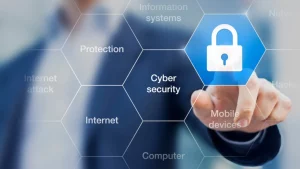The issue of data privacy in schools has become increasingly important in recent years. With the widespread use of technology in the classroom, schools are collecting more data than ever before, including sensitive information about students and their families. It is essential for educators to take proactive steps to protect this data from security breaches and unauthorized access.
The risks of data breaches in schools are significant and can have lasting consequences. These breaches can result in the exposure of personal information, such as social security numbers and health records, which can lead to identity theft and other forms of fraud. Additionally, breaches can also damage a school’s reputation, erode the trust of students and parents, and result in costly legal consequences. As such, it is crucial that schools take measures to ensure that student data is adequately safeguarded.
Importance of Data Privacy in Schools
Data privacy is a crucial aspect that requires due attention in educational institutions to ensure that sensitive information remains confidential and protected from potential breaches. Student data tracking has become a common practice in schools, which means that schools must ensure that they have a proper system in place to protect students’ personal information from unauthorized disclosure. This is even more important when considering that schools often collect data on students without their knowledge or consent. Therefore, schools must obtain parental consent before collecting any student data and ensure that the collected information is used solely for educational purposes. However, despite the best efforts of schools to protect student data, there are still significant risks of data breaches that can occur. This is why schools must remain vigilant and take proactive measures to minimize the risks of data breaches.
Risks of Data Breaches
The potential for unauthorized access to sensitive information presents a significant threat in the realm of educational data protection. Data breaches can have a severe impact on schools, resulting in the loss of confidential information, financial losses, and reputational damage. The consequences of breaches can be far-reaching, affecting students, teachers, parents, and staff members. Schools must take proactive measures to safeguard student data by implementing robust security measures, including strict access controls, firewalls, and encryption. In addition, schools must provide regular training to staff members on how to identify and respond to potential data breaches. It is crucial for schools to acknowledge the potential risks of data breaches and take the necessary steps to mitigate them. With the increasing number of incidents, it is imperative for schools to prioritize the protection of student data. Legal obligations for protecting student information must be taken seriously to avoid any legal repercussions.

Legal Obligations for Protecting Student Information
Ensuring compliance with legal requirements for safeguarding educational data is a critical responsibility for educational institutions, and failure to do so can result in significant penalties and legal consequences. Compliance requirements for safeguarding student information include obtaining parental consent before sharing any sensitive information with a third party, implementing appropriate security measures to protect the data from unauthorized access, and disclosing any data breaches in a timely manner.
Educational institutions must also comply with federal laws such as the Family Educational Rights and Privacy Act (FERPA) and the Children’s Online Privacy Protection Act (COPPA) which outline the rules governing the collection and use of student data. Failure to comply with these legal obligations can result in lawsuits, fines, and damage to an institution’s reputation. It is, therefore, crucial for educational institutions to take all necessary steps to protect student data and ensure compliance with all applicable laws and regulations. In the subsequent section, we will discuss practical tips for securing your business data.
Practical Tips for Safeguarding Data
One may learn effective methods for preserving the confidentiality of educational information by examining practical recommendations for safeguarding sensitive data in academic settings. One such method is data encryption, which involves converting plain text into a cipher text that can only be read by authorized individuals with the appropriate decryption key. Encryption can be applied to various forms of data, including email messages, documents, and stored data. Another method is access control, which involves restricting access to sensitive data based on the principle of least privilege, which means that individuals should only have access to the minimum amount of data necessary to perform their job responsibilities. Access control can be implemented through the use of passwords, biometric authentication, and role-based access control. By implementing these practical recommendations, academic institutions can ensure that student information is protected from unauthorized access and misuse.
Conclusion
In conclusion, safeguarding student data is crucial for schools to maintain a secure learning environment. The risks of data breaches are significant and can cause irreparable damage to students’ personal and academic lives. Legal obligations exist for schools to protect student information, and failure to do so can result in severe consequences.
To ensure the safety of student data, practical tips such as implementing strong passwords, limiting access to sensitive information, and regularly backing up data are essential. While these measures may seem tedious, they are vital for preventing data breaches and protecting the privacy of students.
You May Also Like:



